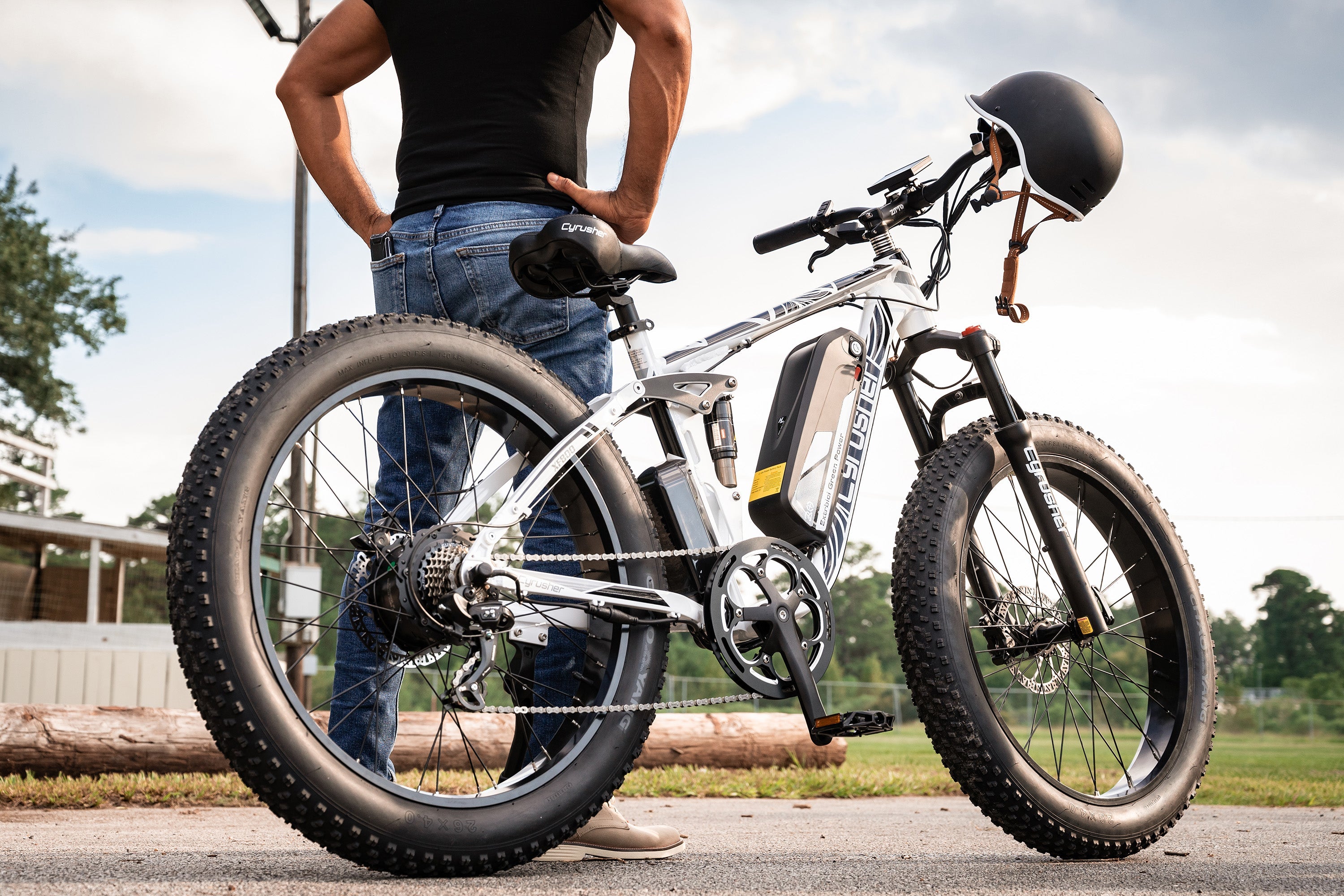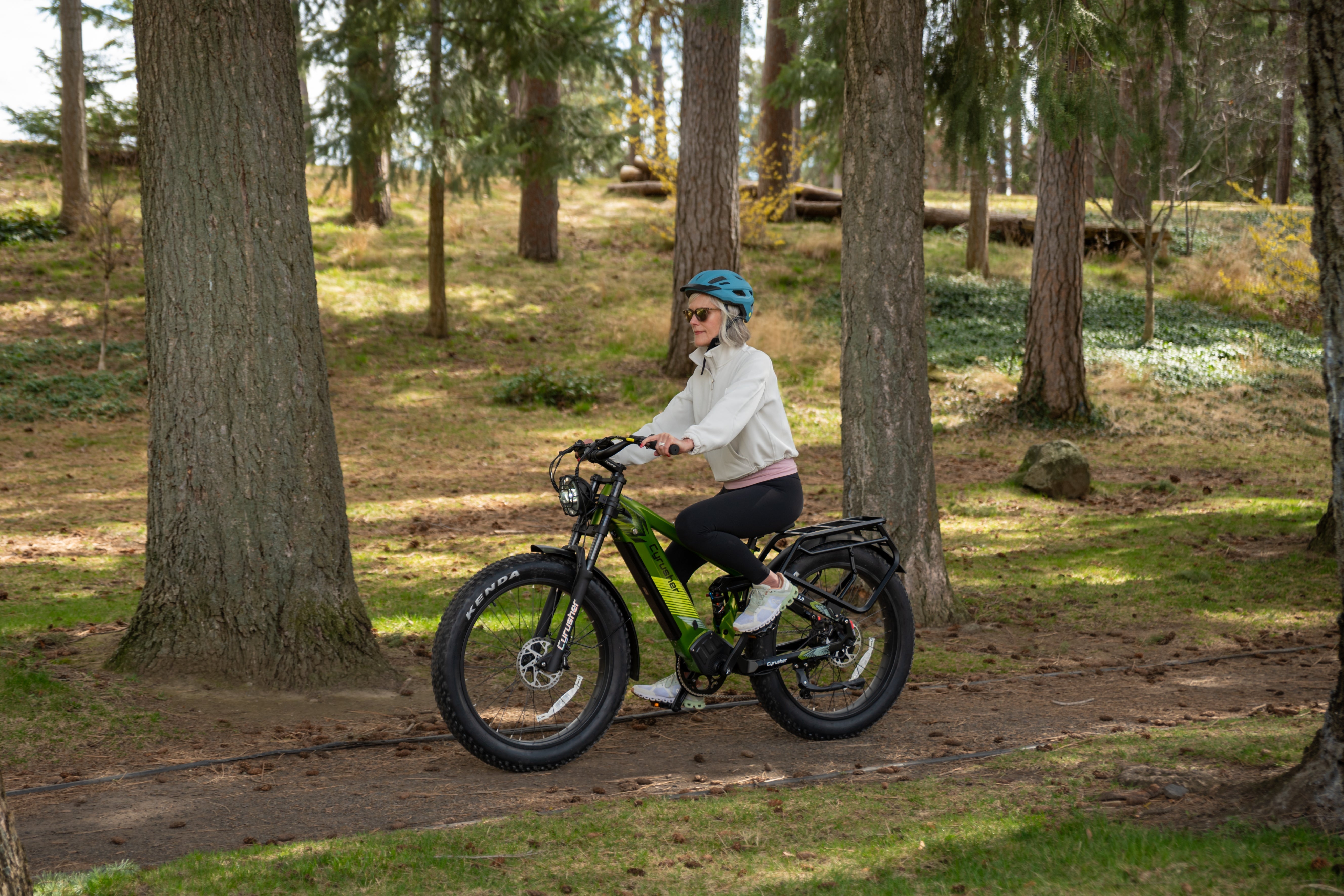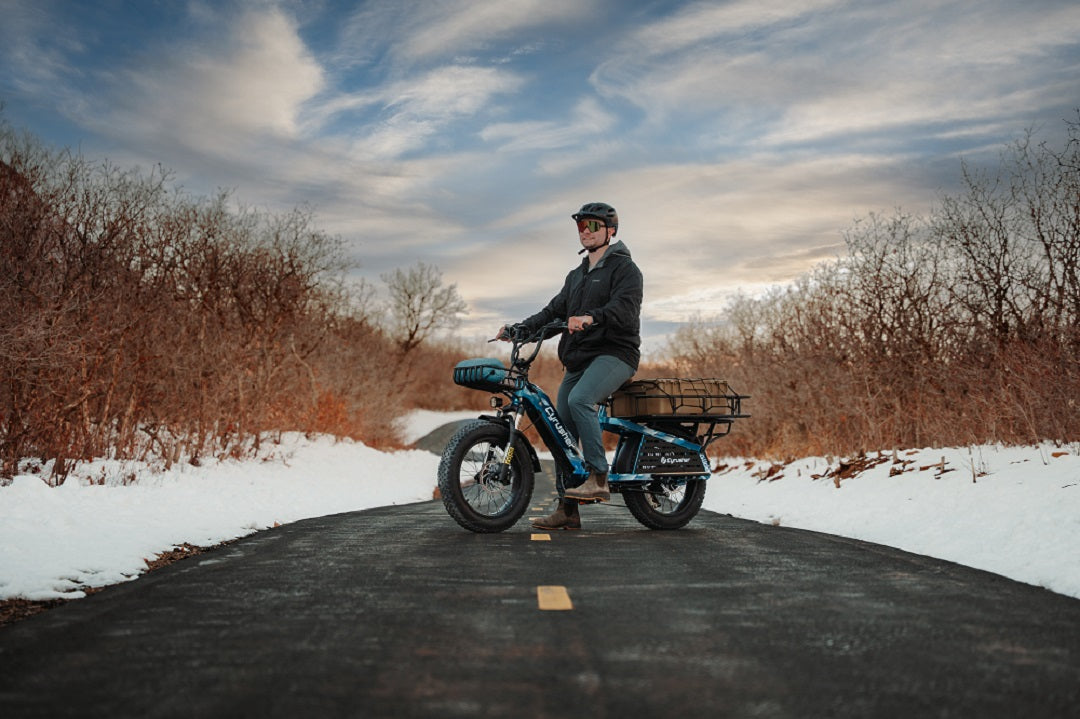The question riders frequently ask is about the battery life of an electric bicycle. Considering that the battery life varies depending on the options available on the display interface, predicting how long the battery will last can be challenging. The purpose of this article is to assist you in understanding e-bike batteries and help you choose the right e-bike battery for your needs.
Types of e-bike batteries
One of the most crucial parts of an e-bike is the battery which provides power and propels the entire machine ahead. The efficiency of the vehicle and the distance traveled will vary depending on the battery you choose. The actual distance an e-bike can be ridden may deviate from the ideal distance the battery will support given that the weight of the model and other factors can also influence the battery's range.

Three common battery types for e-bikes
Sealed lead-acid batteries
As technology matures, lead-acid batteries remain one of the classic battery types. However, it has a poor energy density and weight disadvantage when in operation., Although many automobiles and large trucks still opt for it because of its extended lifespan and affordable price, this kind of battery is unsuitable for electric bicycles since it takes a long time to charge and performs poorly in cold weather. Its large weight can also have a substantial negative effect on how well an electric bicycle operates.
Nickel-metal hydride batteries
Another common type of rechargeable battery is the NiMH battery which has the ability to charge and discharge with improved safety. This kind is more expensive, has lower energy and power densities and places more demands on the environment in which it is used. NiMH batteries work when the temperature is between 0 and 40 degrees Celsius. Operating them at higher temperatures lowers their performance while running them at lower temperatures accelerates capacity loss. Although NiMH batteries are more widely used in the hybrid vehicle market, they can’t compete with affordable and powerful lithium batteries for e-bikes.
Lithium-ion batteries
A solution that offers more battery energy storage in a smaller volume is the lithium-ion battery. It is now the most common form of energy storage battery available. It offers better charge density, a longer lifespan and more charge cycles. Additionally, since it weighs less than the alternatives, it helps riders maneuver their vehicles smoothly. High-quality lithium-ion batteries typically last up to two years and can provide up to 800 charge cycles while still remaining reasonably priced for the customer.
It's important to know that lithium-ion batteries differ in their internal electronic structure and are divided into many different types which also differ in performance. There are six common types of lithium materials including: lithium cobaltate (LiCoO2), lithium manganeseate (LiMn2O4), lithium nickel cobalt manganeseate (LiNiMnCoO2 or NMC), lithium nickel cobalt aluminiumate (LiNiCoAlO2 or NCA), lithium iron phosphate (LiFePO4) and lithium titanate (Li4Ti5O12).
The high energy output of lithium cobaltate makes it a popular choice for mobile phones, laptops and digital cameras. The disadvantages are its short life span, low thermal stability and limited load capacity. It does not offer greater advantages in terms of safety and cycle life.
Lithium manganate is a popular choice for power tools, medical devices and hybrid and pure electric vehicles. Lithium manganate has average overall performance but is safer than lithium cobalt. And, when blended with NMC can provide increased power, safety and longevity, helping many electric vehicles, for example, to achieve optimum performance.

Lithium Nickel Cobalt Manganate is one of the most common structures for lithium batteries. It has become the choice for power tools, electric bicycles and other electric power systems. Lithium nickel cobalt manganate has excellent overall performance with a low self-heating rate. As a result, it is becoming a popular choice for a growing number of industries and its wide range of applications is expanding.
Lithium iron phosphate offers good chemistry, higher current ratings and long cycle life, good thermal stability, better safety and greater tolerance to different operating conditions. However, its low capacity means that it is only commonly used in specialized markets.
Lithium nickel cobalt aluminum acid also offers high energy ratios and operational efficiency and a long service life, but has the disadvantage of high cost and a less stable safety profile. It can also be used in electric vehicles, medical devices and a range of industrial applications.
Lithium titanate is distinguished by its excellent low temperature discharge characteristics, fast charging speed, long service life and good safety. However, there is still room for improvement in terms of cost and energy ratio. It is commonly used in UPS and solar street lights.
While the lithium-ion chemicals listed above can be combined for various applications, e-bike batteries tend to fall into three categories: lithium-manganese, lithium-cobalt, and lithium-ion polymer batteries.
Cyrusher's models use battery types from well-known manufacturers such as Samsung or LG. Most of them are lithium ternary batteries. Ternary lithium batteries are a type of lithium battery that uses lithium nickel cobalt manganate as the positive electrode and graphite as the negative electrode. It is a battery type with high running efficiency and resistance to low temperatures, and it can be charged at high rates. However, it has certain disadvantages in terms of heat resistance. It needs to follow a proper charging process to avoid dangers brought about by improper operation.
Range
You can get an estimate of the travel range for a battery by using these simple data formulas:
Ampere-hours (ah)* Voltage (V) = Watt-hours (Wh)
Watt-hours (Wh) * 1 (mile) / 12Wh = Mileage
To determine how long an ebike can travel on a full charge, take the Cyrusher XF900 as an example. The XF900 is equipped with a 48V 17Ah battery or 816wh. An estimate of 12Wh is required to travel one kilometer (varies based on battery characteristics, etc.). The calculation yields an approximate range of 68 miles on a full charge when converting watt-hours to miles. These formulas are helpful in determining the approximate range of an e-bike battery as the travel range of each model will differ depending on the battery specification.
How to ride further
-
Maintain battery and vehicle performance safety
Keep your battery in good shape if you are hoping to travel further. It is recommended to charge your battery for a full cycle before traveling. Furthermore, before going out for a ride ensure all the mechanical parts, such as brakes, are in proper working order to prevent adversely effecting on your riding performance.
-
Drive at low speed and with pedal assist mode
Riding at a low speed while pedaling with the pedal assist mode is also recommended to travel further. As a result, you can save battery life while getting a better workout at the same time.
-
Lighten the load and choose the right surface to ride on
Additionally, load weight and riding terrain also have a significant impact on battery life. Ebikes with a heavier load result in increased traction and more power consumption. Compared to a bike with the same configuration on a flat city road, the bike riding on bumpy terrain consumes more energy and drains the battery faster. As a result, if you want to travel longer distances, you can choose to ride on flat city roads and limit the load weight.

How to choose the most suitable battery for your e-bike
The importance of safety
Safety always comes first. Choosing a battery that has been rigorously tested and is of high quality is imperative rather than buying a cheap unbranded battery that is not secure. The increasing number of issues involving exploding batteries continues to raise people's awareness of the risk. When choosing a battery, you should not be tempted by low prices. Purchasing a battery from a reputable manufacturer is always better. Cyrusher, for example, offers batteries from renowned manufacturers Samsung and LG which undergo strict quality tests to ensure battery stability and safety of use.
Give preference to batteries with high capacity or light weight
It follows that the range will increase as battery capacity increases. In addition, riding efficiency is impacted by the battery's weight. As a result of this, people tend to prefer batteries that are lighter but with higher capacity. However, an increase in battery capacity does not necessarily result in a decrease in battery weight. Therefore, if you want a longer range, focus on a higher-capacity battery; but prioritize a lighter one if you want a more relaxed and freer ride.
Give priority to original replacement batteries
Riders prefer to select a high-capacity, high-performance product when it comes to operating efficiency. Original replacement batteries remain the preferred choice because of their superior compatibility and flexibility. A more rigorous safety and functional testing process was conducted on the original battery during the vehicle's manufacturing process to ensure the best riding performance. Therefore, by selecting an original battery, you may avoid any safety and compatibility issues, making it simpler to change the battery in your bike and get back on the road quickly.
In summary
The battery's specifications determine how long an e-bike battery lasts. The riding efficiency of each model, however, varies from manufacturer to manufacturer and this also affects the travel range and battery life of the electric assist bike. Quality and capacity should always be the top priorities when it comes to choosing an e-bike battery as it is the simple rule that the larger the capacity, the longer the battery will last. Select your ideal quality battery for your electric assist bike to embark on your spring riding with a feeling of freedom.










Share:
In Support of Earth Day, Cyrusher Offers an E-bike Sale Plan for Cycling Enthusiasts
Go Fishing with an Electric Bike